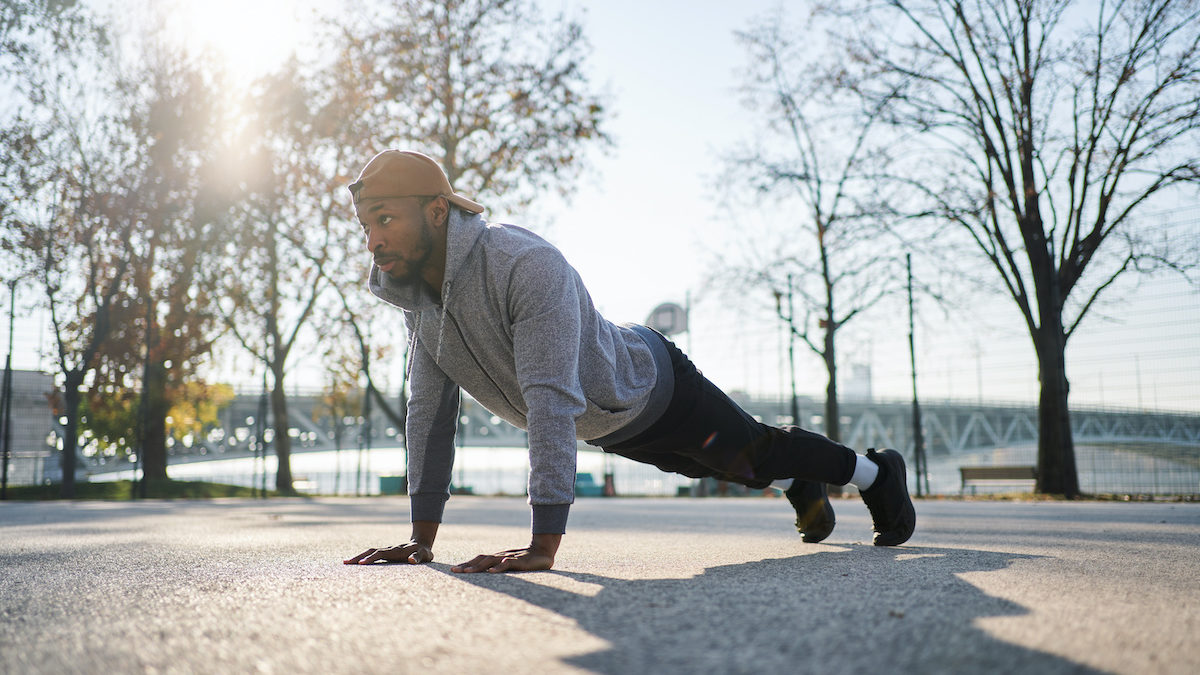Ask Dr Adam: How Do Women Need to Train Differently From Men, and Vice Versa?

Two recent bits of news from the world of sports science have reignited some interest in how men and women may respond differently to exercise. This year’s British Cardiovascular Society conference suggested more significant cardiovascular “ageing” observed in older male endurance athletes than in women. Around the same time, a completely separate study was published, suggesting that the optimum time of day to exercise may also be different in men and women.
The suggestion that men and women are not the same is not necessarily new and shouldn’t come as a surprise. Nevertheless, it is helpful to take this opportunity to explore how men and women differ, particularly concerning how they respond to diet and exercise.
Body Fat Differences Are Important
The first thing to note is that women have proportionally more body fat than men. As a percentage of body weight, healthy women typically have 20-30 percent body fat versus 10-20 percent in males. Moreover, women store body fat differently from men. Women preferentially store fat in subcutaneous adipose tissue, particularly around the gluteo-femoral region (hips, thighs and buttocks). Men, however, typically store fat more centrally in the abdominal area, both subcutaneously and viscerally (i.e. around the organs).
These distinctions are particularly pronounced during periods of weight gain and are partly down to hormonal differences. These are not just sex hormone differences (e.g. oestrogen) but also differing glucocorticoid release (i.e. cortisol). Because of menopause, however, preference toward peripheral fat storage becomes less pronounced, leading to more body fat centralisation.

Yet, you need to look beyond just the amount and location of body fat and appreciate how this body fat operates. Subcutaneous fat, particularly in the gluteo-femoral region, acts as a very effective “metabolic sink” for storing surplus lipid (and indirectly glucose) without issue. The turnover and release of fatty acids from this subcutaneous fat “sink” also serve as a fuel supply to other tissues like muscle. By design, this helps women fuel the energy needs of pregnancy and lactation.
Moreover, given the higher overall body fat and bigger subcutaneous fat stores, women generally have higher circulating levels of fatty acids and are better fat oxidisers than men.
It’s also one reason why, despite higher body fat, pre-menopausal women of normal body weight have a relatively lower metabolic risk than men.
Differences In Response To Exercise
Exercise is obviously associated with increased energy demand, but how we fuel the muscle to do the work is particularly important. The energy demand, and therefore the fuel mix used, depends on the exercise’s intensity. At relatively low intensity, a mixture of carbohydrates and fatty acids are oxidised to meet the demand. Still, much of the energy must come from carbohydrates at a higher intensity, along with other faster energy systems.
However, at any given exercise intensity, there is good evidence to suggest that women are better fat burners than men. There are a couple of reasons for this, one of which is the body fat differences between men and women that we have just discussed. Hormonal differences also play a role, not just androgens like testosterone, but because men release more catecholamines (e.g. adrenalin) as a consequence of exercise.
This more prominent “fight or flight response” drives greater carbohydrate utilisation during exercise. Yet simultaneously releasing more fatty acids from mainly central body fat stores, especially visceral adipose tissue, makes the body more sensitive to these catecholamines. It is incredibly relevant when it comes to post-exercise, where there is a pronounced switch to fat-burning (see my explainer on the ‘afterburn affect’, or EPOC, for more on this).

This switch to burning fat after exercise is more exaggerated in men than women, even at relatively modest exercise intensities. At the same time, in this post-exercise period, men are primed to take up any glucose and replenish their spent carb stores. Overall, men are more prominent carb burners and are better at sparing and replenishing carbohydrates post-exercise.
In contrast, women are less aggressive carbohydrate burners during exercise and generally better fat burners. Consequently, the switch to fat-burning after exercise is not as pronounced in women, particularly at low to moderate exercise intensities. In short, the fuel utilisation and exercise EPOC effect differ between men and women.
Given all the above, it is logical that the interplay between diet, meal timing and exercise may be gender-dependent. Although we have mainly looked at endurance-type exercise effects, for resistance exercise the anabolic drivers of muscle repair and protein synthesis are generally more evident in men than women. However, knowing the differences in fuelling can give some insight into how women and men can achieve the same benefits.
How Timing And Feeding With Exercise Differ
Appreciation of this systematic difference in exercise response will likely translate into different strategies for men versus women. Regarding feeding around exercise, one goal for endurance exercise is to maximise the adaptation to exercise through enhancing the cell signalling in the muscle. The recent advent of” training low” is very much in keeping with this, exercising either fasted or glycogen depleted to amplify the cell signalling effect.
However, much of this work is done in males and fits the logic that as carb burners, refraining from feeding carbs before exercise can have a significant effect. However, this may not necessarily hold for females. In contrast to males, we have observed in several studies that the blunting effect of feeding carbs is actually in the post-exercise period rather than pre-exercise.
Mainly as this dampens the more subtle switch to fat-burning and can serve as a carbohydrate overload, males may benefit from training low, but females may be better off recovering low. That’s not to say women must eat before, nor that women can’t have anything post-exercise, especially as we have seen that protein does not have a blunting effect, it is just the feeding of carbohydrate afterwards that has an impact.
Relating this to the recent study mentioned in the intro, on the optimum time of day to exercise, the researchers noted that women in both the AM and PM groups didn’t change their fat oxidation, unlike the men, partly explained by the fact that all exercises (AM and PM) were performed “fasted”. In addition, meals for all participants, both male and female, were eaten post-exercise.

Nevertheless, both female exercise groups still lost body fat, with the AM group losing more, possibly because breakfast was a smaller meal and less blunting than dinner. In contrast, males seemed to benefit more regarding resting fat burning, with the PM group having a more significant increase. Such an observation is in keeping with the “train low” model. It could also be because the PM group will likely continue this elevated fat oxidation to the following day when the resting measurements were taken.
Fuel availability is one of the critical anabolic drivers of muscle repair and protein synthesis, mainly feeding carbohydrate and amino acids, like leucine. So nutrition post-exercise in both men and women is helpful for these anabolic adaptations to the muscle. But what about resistance exercise? The observation that strength gains were more pronounced after PM exercise may be down to generally better exercise performance at that time of the day (i.e. more work achieved). However, it could also be because the post-exercise meal may be more substantial (e.g. in terms of protein and carbohydrate).
So, in summary, knowing the physiological differences can help tailor your exercise and your diet for maximal gain — a simple way of achieving a level of personalised nutrition.


















